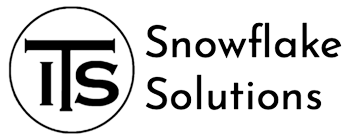Introduction:
The Snowflake Data Cloud is an ecosystem that enables thousands of Snowflake customers, partners, data providers, and data service providers to collaborate on data, derive insights, and create value from rapidly growing data sets in a secure, compliant, and seamless manner.
What is the Snowflake Data Cloud is sort of a loaded question for long-time Snowflake Professionals like a large chunk of our Snowflake Solutions Community. From a Snowflake Veteran user standpoint, [Assuming anyone has been deeply working on Snowflake since the fall of 2019 or earlier], this is a massive rebranding. Many of us view the Snowflake Data Cloud as a strategic evolution of Snowflake that can take on more database processing workloads. Previously, most Snowflake customers regarded Snowflake as an analytical RDBMS meant for data warehousing purposes.
My take is that I, and many other strategic thinkers needed to evolve Snowflake to a larger strategic analytical data solution before Snowflake was ready for its IPO in the fall of 2020. Therefore, while many of the pieces were already there, the terminology of the Snowflake Data Cloud was born on June 2, 2020, at the virtual summit and this announcement.
Part 1: What the Snowflake Data Cloud looks like in 2023:
The Snowflake Data Cloud in 2023 is a mature, integrated data platform that enables organizations to break down data silos, derive insights, and deliver value from their data. It has evolved into a global data exchange where thousands of customers, partners, and data providers can securely and seamlessly share and transact data. The Snowflake Data Cloud now supports all major data workloads, including data warehousing, data lake, data engineering, data science, data applications, and data sharing. It is a powerful, scalable, and compliant platform for data-driven digital transformation.
Part 2: The Snowflake Data Cloud Six Major Workloads:
Data Workload 1 – Data Warehousing
I believe that Benoit/Thierry’s main focus was initially on this workload or use case. In my opinion, this remains Snowflake’s best use case and it is still the best cloud data warehouse in 2021. I am trying to be unbiased in my assessment. As someone with hands-on experience building many data warehouses on various platforms, I can attest that Snowflake excels in this regard.
Data Workload 2 – Data Engineering
Data Engineering is a good workload for Snowflake. (Add some personal thoughts to this workload).
Data Workload 3 – Data Lake
I will postpone our analysis of Snowflake as a data lake. I have been advocating for what I refer to as SnowLake for quite some time, likely since late 2018. However, we are presently in the process of conducting a comparative study of various potential data lake solutions.
Data Workload 4 – Data Science
Data Science is a new area of focus for Snowflake. They recently introduced SnowPark as their preferred solution for Data Science Workloads. However, it is still in its early stages and Python language support is not fully integrated yet.
Data Workload 5 – Data Applications
This is a fascinating task for Snowflake. They have been handling certain aspects of this task for a considerable period of time. However, in my opinion, the field of Data Applications is quite extensive, and many of its subsets may still require the use of an OLTP-type database.
Data Workload 6 – Data Exchange
If you couldn’t guess, this is probably my favorite upcoming task and use case. This is another task where I believe Snowflake excels and is currently leading the competition by a significant margin.
At Snowflake Solutions, we have been working with Snowflake to develop Data Sharing, Data Exchange, and Data Marketplace solutions since early 2018. We have been monitoring the growth of the Snowflake Marketplace since its launch in July 2020.
In addition to the Snowflake Data Cloud Platform, it seems that Snowflake customers often consider the Data Cloud concept to encompass Data Sharing, Data Exchanges, and the Data Marketplace as a whole.
Conclusion:
The Snowflake Data Cloud is becoming more popular in the market. We have personally witnessed the rapid growth of the Data Marketplace and Data Sharing features of the cloud. However, there is still a long way to go before owning and dominating these six major data workloads. Overall, the data cloud is an intriguing strategy with compelling value if you are aligned with Snowflake and its partnerships. The announcement of the Aladdin Data Cloud is probably the most significant market confirmation of this vision.
Thank you for taking the time to read our article. We hope you found it informative and gained insight into our viewpoint on the Snowflake Data Cloud. If you would like to learn more, we encourage you to explore additional articles in the Snowflake universe.


